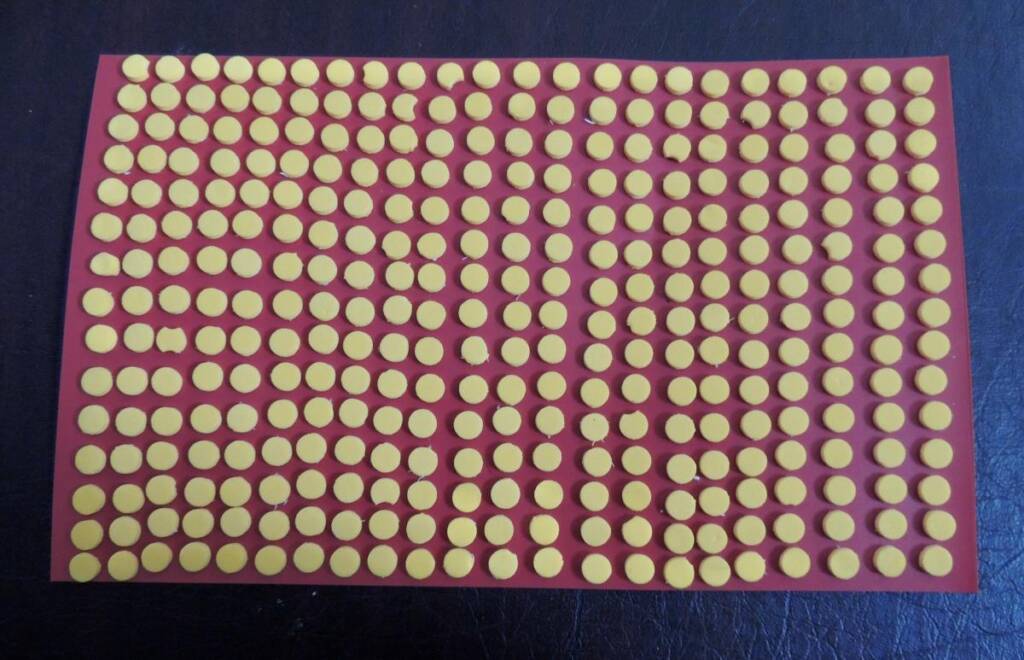
Indicator Dots
Indicator dots are an easy and efficient way for students who are blind to mark their braille work.
By Liz Eagan
When working with my students learning braille, I prefer to use indicator dots as their method for responses. The reason being quite simple: it’s very easy for them to change their answer when they go back to review their work.
Most programs suggest using push pins and cork board. I don’t like push pins in the hands of the young. Too many chances to injure themselves. If an error is found or you want to use the sheet again at a later date with the student, the student can feel where the push pin mark was.
Another popular method is to use crayons to mark the answer. This is virtually impossible for the student to correct, as trying to erase the crayon also erases the braille.
So, I use the indicator dot. The dots are made from the adhesive foam pages you can purchase from craft stores or areas in stores. A paper punch is used. I use a 3-hole punch as it speeds up the time it takes me to make the card. I then peel the sticker off and place them on a plastic card. The size of the card depends on the purpose. For instance, for a test of 20 questions, the card may be bookmark size. Typically, I make the cards to by 4×6 inches in size.

The student is able to quickly obtain the indicator dot from the card, place it on their answer, and move on to the next question. I’m able to document if I use the page again…for instance, in the picture of the braille page, my student had an off day. She was all over the map with behavior and her braille recall. I chose to have her redo the page by my removing all the indicator dots. She had no clue she had already done this page previously. The plastic I use is from cheap binders/folders that I buy at the dollar store or from clearance racks. You know the ones that are bendable?
If you use the binders for the plastic, the center piece where the binder rings are? Those can be used to make mobiles for the little ones or some teachers have asked me for them so they can easily hang student work from the ceiling or a bulletin board before placing them in a student portfolio.
One downside is these cards take time to make. However, I like to use parents who want to volunteer, school PTA members, student service organizations, my own children, etc. People like to help, they just don’t always know how.
